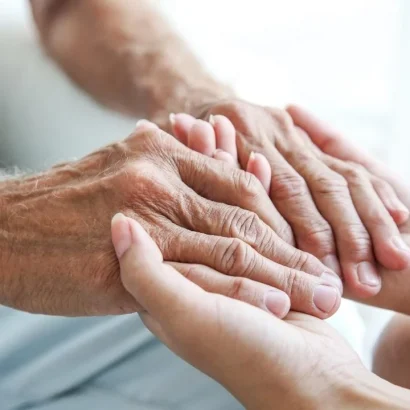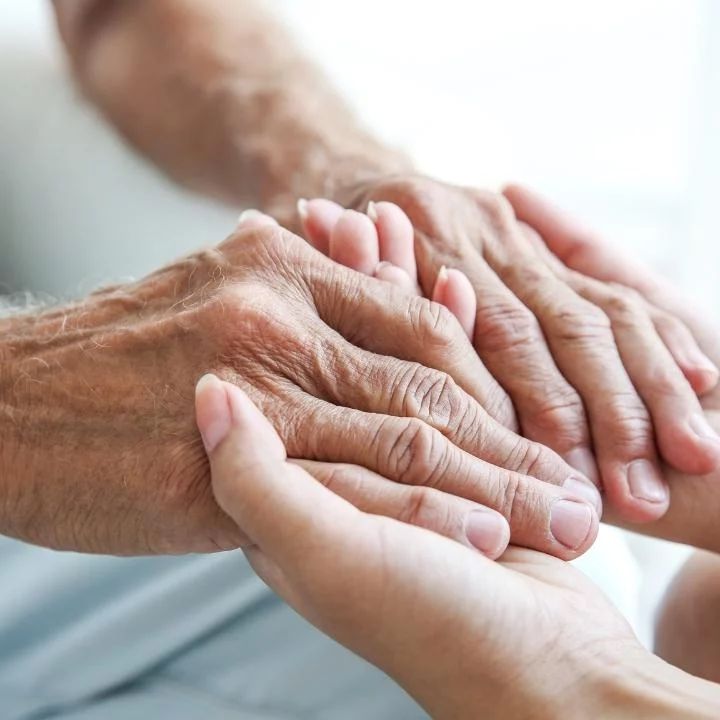How to help someone having a stroke
When it comes to strokes, every second counts. You can potentially save someone’s life and help limit harm to their brain by understanding what stroke is and what the warning signs of stroke look like.
What to do if someone is having a stroke
Use the F.A.S.T. assessment to identify signs of a stroke
If you’re concerned that someone is experiencing a stroke, look out for the F.A.S.T assessment signs:
Face – watch for facial drooping on one side or an inability to smile.
Arms – check for numbness on one side or problems lifting one or both arms.
Speech – listen for slurring, problems forming or understanding words, or a general sense of confusion.
Time – act fast to minimise damage.
If you recognise any of the above signs, call Triple Zero (000) and stay calm. Do not drive to the hospital yourself, as first responders can start life-saving treatment on arrival and select the best hospital for the person’s condition.
How to effectively communicate with emergency services
Triple Zero recommends that you ‘stay focused, stay relevant, stay on the line’ when talking to emergency services.
- Stay calm and call Triple Zero (000) from a safe place.
- Request an ambulance.
- Once redirected to the ambulance, speak clearly and answer all questions they ask.
- Don’t hang up until the operator tells you to.
- Provide information on where you are, including the address and distance from any recognisable landmarks.
- If you are calling while travelling, tell the operator the direction you are travelling in.
What to do while waiting for an ambulance
The Stroke Foundation recommends that you do the following while waiting for the ambulance to arrive:
- If the person is conscious, lay them down on their side with their head slightly raised and supported.
- Do not give them anything to eat or drink.
- Loosen any restrictive clothing that could cause breathing difficulties.
- If weakness is obvious in any limb, support it and avoid pulling on it when moving the person.
- If they are unconscious, check their breathing and pulse and put them on their side. If they do not have a pulse or are not breathing, start CPR straight away.
- If you are unsure how to perform CPR, the ambulance call taker will give instructions over the phone.
Stroke emergency management
The role of medication and surgery in a stroke emergency
Doctors can administer and prescribe different medications to stroke patients. The recommended treatment for a stroke is unique to each stroke patient.
Medication and surgery for ischemic strokes
- Clot-dissolving medication, also known as tPA, aims to dissolve the blood clot. It is only suitable for select patients and can only be given 4.5 hours after the first sign of stroke symptoms.
- Endovascular clot retrieval is a complex surgical procedure performed via a catheter threaded to the brain through the large arteries. A device then traps and retrieves the clot.
Medication and surgery for haemorrhagic strokes
- Intensive blood pressure control by a specialised stroke unit is performed in the first hours of a stroke that is caused by bleeding in the brain.
- Medications to reverse the effects of blood thinners may be given to patients who use blood thinning medication.
- Surgery to the brain to reduce swelling or drain the blood may be considered in some cases.
- Surgery to repair the blood vessel by open surgery or catheters may be considered.
Getting support for stroke recovery
After a stroke, a person may need additional support, including:
- Nursing
- Transportation
- Meal prep
- Exercise
- Cleaning
- Grocery shopping
- Personal care.
If you do need support after a stroke, you can use Mable to book independent support workers.
After stroke care at home
After a stroke, a person may need at-home assistance and follow-up care. A stroke may impact a person’s ability to do daily activities, such as bathing, eating, walking and dressing.
Through Mable, an independent support worker can help provide at-home care and respite for family members. They can assist with:
- Taking medications
- Managing medical appointments
- Transportation
- Meal prep
- Eating
- Accessing emotional support.
Some support services require independent support workers to obtain certain qualifications.
Learn more about support services you can access through Mable.
Exercise and rehabilitation after stroke
A stroke can impact how you walk, sit, move and balance. After your stroke, you may meet with a physiotherapist who will assess your mobility, set up a rehabilitation program, and set goals for your recovery.
What you need to relearn (if anything) will be unique to you, but in general, your rehabilitation may focus on:
- Rolling over in bed
- Moving from sitting to standing
- Moving from bed to a chair or the toilet
- Walking.
In addition to rehabilitation, you may have an exercise regime designed to help you:
- Build strength
- Improve coordination
- Improve balance
- Increase fitness levels
- Reduce muscle stiffness and pain.
Psychological support after a stroke
It’s common to experience anxiety and depression after a stroke. It’s important that if you have these feelings, you do not ignore them and seek help. You can talk with your GP about how you are feeling so they can identify the best treatment options for you. You can also seek out help from allied health professionals such as psychologists, physiotherapists and dietitians.
Food and diet considerations to help stroke recovery
After a stroke, you may experience a range of symptoms that make it difficult to eat and drink, including:
- Difficulty using your left arm or hand
- Loss of appetite
- Dysphagia, which makes it difficult to swallow
- Memory loss, which causes you to forget to eat or drink.
A well-balanced diet can improve health and reduce the risk of stroke. The Australian Dietary Guidelines provide more information on the food groups you should eat and the types of foods you should avoid.
To control your blood pressure, you should generally eat foods high in antioxidants, potassium, fibre, calcium, and folate. You should also avoid foods high in salt and fat, as well as alcohol.
FAQs
Can a person recover from a stroke?
The lasting impact of a stroke is different for everyone. Some people will have a complete or very close to complete recovery, while others will have life-long impairments.
How long does it take to recover after a stroke?
Stroke recovery will look different for every person. Improvement can continue for years after a stroke, but for many, the largest improvements will occur in the first six months.
How do you help someone after a stroke?
- Give practical and emotional support as they process their experience and adapt to the 'new normal' – including taking responsibility for their own decision-making.
- Encourage self-sufficiency to support recovery and the rebuilding of confidence.
- Adapt your relationship to suit their changed capacity, including communication and interests.
- Ensure that the right support is in place for recovery and rehabilitation.
You can organise support through Mable. Independent support workers can help with a range of things, such as assistance with daily activities, maintaining an exercise routine, personal care and domestic support.
What are the available treatments for a stroke?
Depending on your unique circumstances and the type of stroke you have, you may receive one or a mixture of the following:
- Surgery
- Mediation
- Rehabilitation.
Your doctor will advise you on the most appropriate treatment for your individual needs.
What is the first aid treatment for a stroke?
St John Ambulance advises that you:
- Carry out F.A.S.T. to identify stroke symptoms.
- Follow DRS ABCD.
- Call Triple Zero (000).
- Reassure the person having a stroke.
- Help the person to sit or lie down in a comfortable position and support their head and neck with a pillow.
- Loosen any tight clothing.
- Keep the person warm.
- Wipe away and secretions from their mouth.
- Stay with them until the ambulance arrives.
When should you go to the ER for a stroke?
If you think you think you or someone else is having a stroke, you should call Triple Zero (000) and wait for the ambulance to arrive to take you to the hospital.
How do you improve your memory after a stroke?
Difficulty remembering certain things after a stroke is common. To help you with any memory concerns, you can:
- Use calendars or diaries to keep track of appointments and important dates
- Write short notes after you've spoken with someone
- Set reminders to take medication
- Leave things you use regularly in the same place every time
- Use a pill box to organise your medications
- Put reminders where you will see them
- Keep a routine and use to-do lists to plan your day
- Speak to a medical professional.
What helps constipation in stroke patients?
Bladder and bowel problems, including constipation, can be common after a stroke. You should start by talking to your GP about your constipation so that they can recommend diet changes, exercise, or medication changes.
How do occupational therapists help stroke patients?
Occupational therapists can provide aids to help you overcome loss of movement and strategies to help you remember to eat.
How do speech therapists help stroke patients?
Speech pathologists can provide strategies to help you to eat and drink safely.
Can you fly after a stroke?
There is not one answer to this question. While most airlines will not allow a person to fly shortly after having a stroke, each airline has different policies regarding flying with an existing medical condition. It is best to discuss your situation with your doctor and the airline before booking a flight.
The information provided in this article is general information only. In the event that you or someone else you know has a stroke, Mable encourages you to seek your own independent medical advice about strokes.

